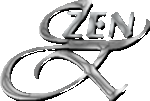Review: Super Stitches Knitting: Essential Techniques Plus a Dictionary of More than 300 Stitch Patterns by Karen Hemingway
 I saw this in the library and picked it up. I’d been noticing it in the bookstores and flipped through it quickly but didn’t want to buy on a flip through so did my usual and got it out of the library first for a closer look.
I saw this in the library and picked it up. I’d been noticing it in the bookstores and flipped through it quickly but didn’t want to buy on a flip through so did my usual and got it out of the library first for a closer look.
This is a great book if you haven’t knit for a while, or you have but you don’t own any stitch pattern books — I own 6 not including this one. It has a short section that goes over some of the basics like casting on, casting off, how to read a pattern, knitting abbreviations, and other basic knowledge that lot of us take for granted and, if you’re a beginner or return after a hiatus, might need to get started. Myself, if I was a total beginner I think I’d opt for Bitch ‘N Bitch: The Knitter’s Handbook since it has a lot more of the “how-to” stuff.
Now to Super Stitches Knitting, the stitch library is laid out so that the left hand page has the instructions for the (usually) three patterns shown in the photo on the right hand side. The photo shows stitches usually horizontally — top to bottom — changing colors for each pattern. The instructions on the left are leftmost column for the top pattern, and the right most column for the bottom pattern. The problem is that they while the instructions are labeled as to what pattern it is, the photo is not labeled on the photo but in lighter lettering on the very bottom of the lefthand page. It took me a while to find the labels for the photo and I was actually looking. So the info is there.
While most of the photo clearly show the stitch definition because of the light color of the yarn, some of the patterns were in a very dark blue, making if very difficult to detect the stitch pattern unless you already knew what it was going to look like. In a book of stitch patterns, having clear photos is not only a good idea, it’s critical for the reader using it. This didn’t happen often but it was often enough to be annoying.
The book has a great mix of stitches patterns: knit and purl patterns, knit and purl panels, ribs, textured stitches (that seemed to repeat some of the knit and purl patterns/panels), edgings (some wonderful inclusions), ornamental stitches, eyelet patterns, cables, knitted lace, textured colorwork, and some fair isle.
Most of the instructions are written out in standard knitter code. There are some charts but not as many as I’d like. But I wouldn’t let that dissuade me from getting the book. Instructions for the patterns that I read through seemed clear and easy to follow — same for the charts. Since there’s a section on how to read charts and instructions — you’ve got a primer for following which ever method you choose.
So, overall this is a great book for the beginner, a returning knitter, or someone without a stitch pattern. Unfortunately, for me there were no stitch patterns that I don’t already have in the other books that are in my library. However, if I didn’t already have so many stitch library-type book, I’d certainly be adding this one to my bookshelf. So, if you’ve looked at this quickly thinking well, maybe, take another closer look. This may just be the book you need to begin putting together your own bookshelf of stitch patterns.




